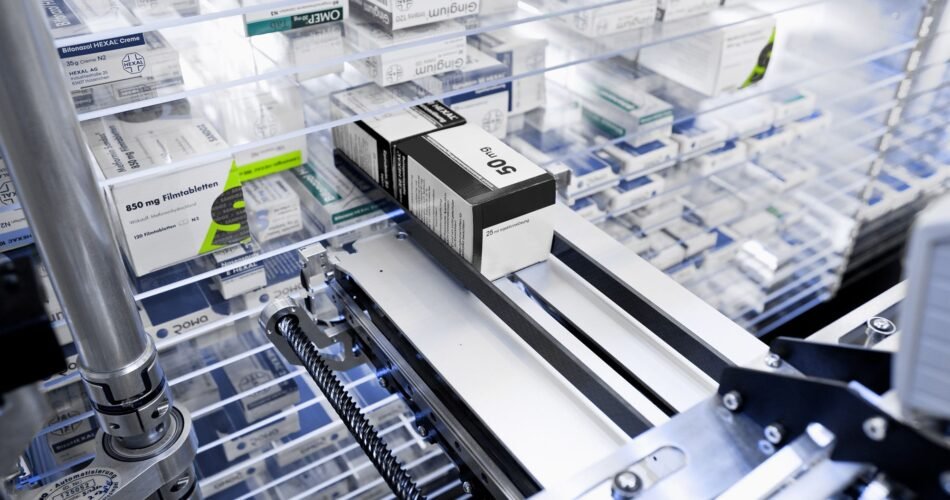In the fast-paced world of healthcare, pharmacies often walk a tightrope—balancing accuracy, speed, and patient safety, all while managing long queues and even longer inventories. If you’ve ever waited too long for your prescription or worried about a possible mix-up, you’re not alone. But there’s a quiet revolution happening behind the pharmacy counter that’s turning this chaos into clockwork precision.
Welcome to the world of Outpatient Pharmacy Automation Systems—a game-changer that’s transforming how medicines are stored, managed, and dispensed.
What Exactly Is an Outpatient Pharmacy Automation System?
Let’s break it down. An Outpatient Pharmacy Automation System is a blend of cutting-edge software and hardware designed to streamline the medication dispensing process in hospitals, clinics, and retail pharmacies that serve patients not admitted to the facility.
Think of it as the behind-the-scenes hero that ensures your prescription is filled quickly, accurately, and with minimal human error.
This isn’t science fiction. It’s happening right now—and it’s saving lives, money, and time.
The Traditional Pharmacy Model: Where Things Get Messy
Before automation, outpatient pharmacies operated in a high-stakes juggling act. Pharmacists had to:
-
Interpret handwritten prescriptions
-
Manually count pills
-
Double-check for drug interactions
-
Maintain inventory
-
Handle insurance validations
-
Communicate with patients
It’s a lot. Even with the best staff and protocols in place, the risk of error is real. According to the Institute of Medicine, medication errors harm at least 1.5 million people in the U.S. each year.
That’s where automated medicine dispensing machines step in.
Meet the Machines: How Automated Medicine Dispensing Works
At the heart of every modern outpatient automation system is a network of automated medicine dispensing machines. These machines aren’t just pill counters—they’re precision tools.
Here’s what they typically do:
| Function | Benefit |
|---|---|
| Prescription Scanning | Reads and verifies electronic prescriptions instantly |
| Robotic Dispensing | Picks, counts, and labels medications with 99.9% accuracy |
| Inventory Management | Tracks stock levels in real time, reducing waste and shortages |
| Safety Checks | Flags potential drug interactions or dosage errors |
| Patient Notifications | Sends alerts when prescriptions are ready for pickup |
Real-World Impact: Faster, Safer, Smarter
Imagine walking into a hospital outpatient pharmacy, scanning your ID at a kiosk, and receiving your prescription in minutes—all without waiting in line. That’s not just a smoother experience—it’s a safer one.
Here’s how patients and providers both benefit:
-
Shorter Wait Times: What used to take 30+ minutes now takes 5 or less.
-
Fewer Errors: Automation drastically reduces mistakes caused by human fatigue or miscommunication.
-
Improved Workflow: Pharmacists can focus more on clinical consultation and less on logistics.
-
Cost Efficiency: Less waste, fewer staff hours spent on manual tasks, and better inventory control.
One hospital in Florida reported a 60% reduction in patient wait times just months after implementing an outpatient pharmacy automation system.
It’s Not Just for Hospitals Anymore
While hospitals were early adopters, outpatient clinics, urgent care centers, and even community pharmacies are catching on fast.
Why? Because these systems offer:
-
Scalability: Whether you’re dispensing 50 prescriptions a day or 5,000, automation adapts to your needs.
-
Compliance: Built-in reporting tools make audits and regulatory checks easier.
-
Patient Satisfaction: Happier patients mean better reviews and increased loyalty.
In a competitive healthcare environment, standing out matters—and automation provides a serious edge.
The Human Touch: Why Pharmacists Still Matter
Here’s the thing: automation doesn’t replace pharmacists—it empowers them.
With repetitive tasks handled by machines, pharmacists are free to do what they do best:
-
Educate patients
-
Offer personalized advice
-
Monitor drug therapies
-
Coordinate with physicians
It’s a win-win. Patients get more face time, and pharmacists get to use their expertise instead of counting pills.
Choosing the Right Outpatient Pharmacy Automation System
Not all systems are created equal. If you’re considering integrating automation into your outpatient pharmacy, here are a few things to look for:
Key Features Checklist:
-
🔹 Integration with your current EMR/EHR system
-
🔹 Real-time inventory tracking
-
🔹 Secure access controls and audit trails
-
🔹 Modular machines for easy upgrades
-
🔹 Support and training from the vendor
-
🔹 Remote monitoring and diagnostics
Choosing the right system is about aligning the technology with your pharmacy’s specific needs and patient volume.
The Future Is Automated—and It’s Just Getting Started
As healthcare continues to evolve, so will pharmacy technology. We’re already seeing AI-powered decision support tools, mobile apps that sync with pharmacy systems, and even home delivery robots.
But at the heart of it all will be the automated medicine dispensing machines quietly doing their job—keeping patients safe, pharmacies efficient, and healthcare more human.
Final Thoughts
The move to outpatient pharmacy automation isn’t just a trend—it’s a transformation. By investing in an Outpatient Pharmacy Automation System, healthcare providers are choosing accuracy over error, speed over sluggishness, and patient care over paperwork.
In short, automation brings order to the pharmacy chaos—and that’s something we can all feel good about.
So next time you pick up a prescription in record time, remember: there’s a smart system working behind the scenes, making your health journey smoother and safer than ever before.
